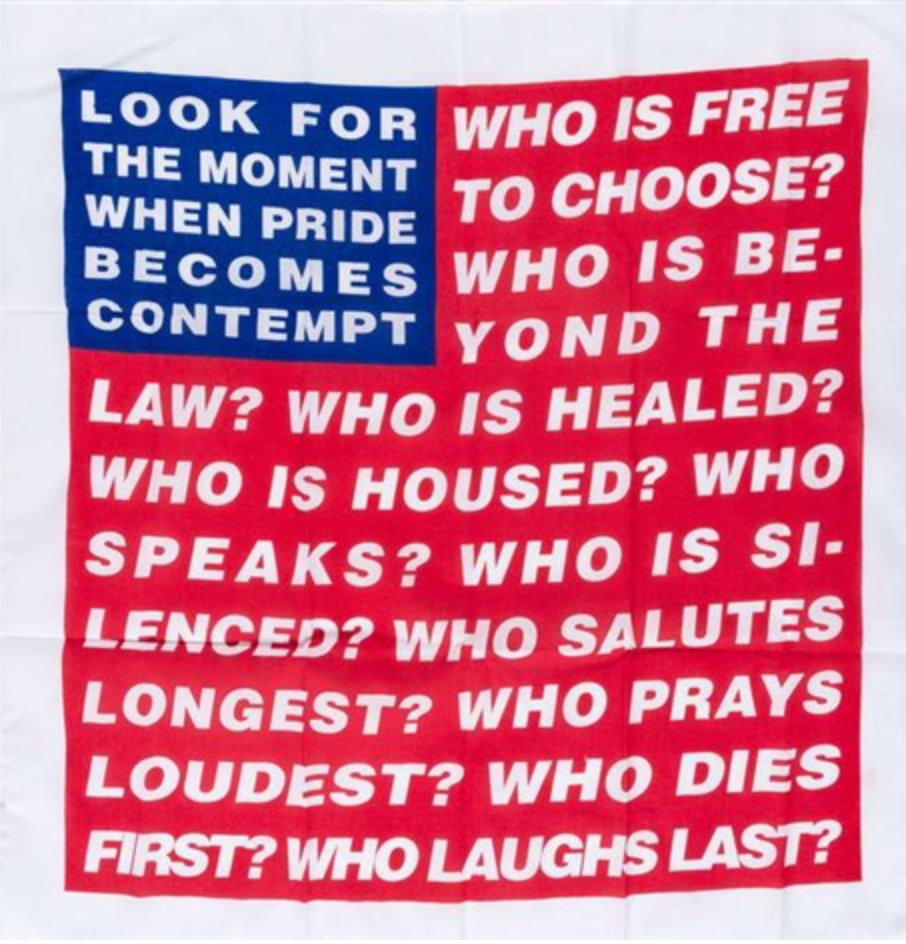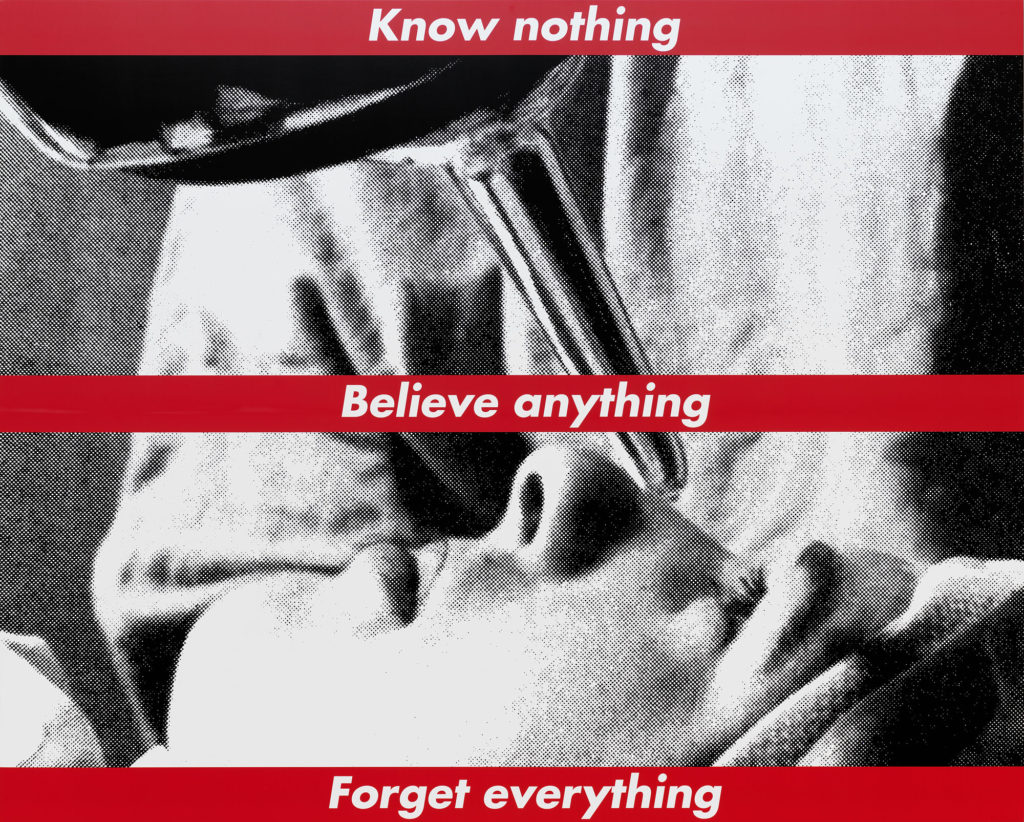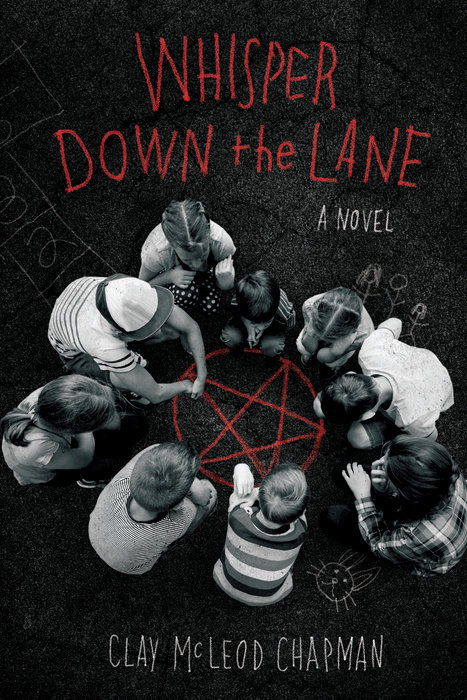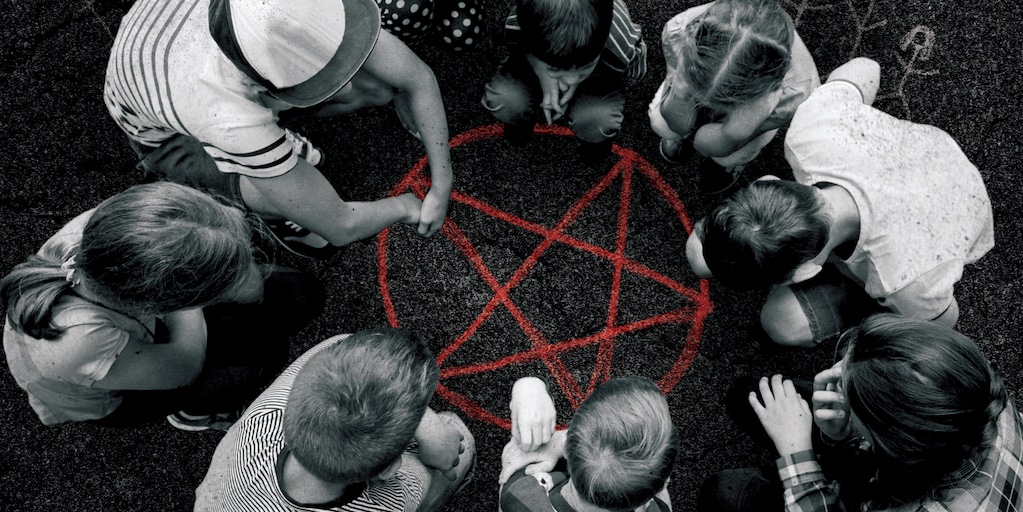Follow me for a moment as I take you down a side road toward my review of Whisper Down the Lane by Clay McLeod Chapman.
I’m a slow reader. I live in the world of a book longer than a lot of other people, and I think that’s why I so often associate other forms of creative expression, like visual art or music, with that book.
When I read Whisper Down the Lane, I immediately thought of an artist named Barbara Kruger. Without going on too much of a tangent, Kruger has a distinct style she developed in the 1980s: minimalist, agitprop-style works that place bold, pithy, and ironic sayings over stark images.
While I love most of her work, three images came to mind when I read Whisper Down the Lane: [one, two, three]. There is a shouting quality (no pun intended) that Whisper Down the Lane shares with Kruger’s work, a well-timed, zany dose of dark humor that we experience right before a wave of dread sets in and we realize that the punchline of the joke is us.



So, if you’re looking for a tl;dr in this review, here it is. Look at those images. Do they shake you to your core? Do they almost make you laugh but also almost make you cry? If your answer is yes, read this book.
Whisper Down the Lane has two protagonists: Richard, living in 2013, is a recently married art teacher at a prestigious elementary school in Greenfield, VA who is trying to adjust to a new, domestic life with his wife and stepson. Sean, living in 1983, is a five year old boy also adjusting to a new life in the town of Greenfield after he and his mother recently relocated for what she calls “a fresh start.”
On the surface, 1983-era Greenfield and 2013-era Greenfield are radically different (much like Sean and Richard). Sean’s Greenfield is a place of picket fences and kids’ faces on milk cartons and cultish devotion to “traditional values.” Like many people in the 80s, fear of deviation and perversion and big, bad Satan buzzes through its residents.
Richard’s Greenfield still has white picket fences, but it is less a continuation and more a replica of Small Town, USA. Despite the artisanal delicatessens and fair trade coffee shops, the ghost of old Greenfield is still there. Except now, the residents aren’t worried about Satanists eating babies, they’re worried about GMOs and being inoffensive to the point of absurdity (“Halloween will now officially be called ‘Character Day’”).
Really, 1983’s Greenfiend and 2013’s counterpart are warped mirror images. Both vehemently enforce traditional values; the only difference is the values themselves and, if something doesn’t pass the town’s morality screening, its residents won’t just protest. They’ll crusade.
Similarly, we see very little in common between Richard–a man in his thirties–and Sean–a five year old–at first. But as the book goes on, we see they’re also just reflections in the same warped mirror. Their commonalities aren’t found in what they are, but what they aren’t. They aren’t individuals, but more vessels that fill up with the personality, needs, and desires of those around them.
Richard’s wife is vegan, so now he only eats meatless meals. He hates cats but, since she owns one, never tells her. He doesn’t even acknowledge the arrival of his birthday. That is, he doesn’t just eschew celebration, he actually ignores it. The one thing Richard truly owns about himself is his art, and even then he describes it as something he did to “possess the emptiness” inside him.

Of course, Sean is five and has no reason to be a fully-realized human yet, but we can still see the early stages of Richard’s affliction in him, especially when we see his behavior juxtaposed with another five year old boy: Richard’s stepson, Eli.
There’s a moment in the book when we find out that Eli hit another boy–an older, schoolyard bully–who was picking on a fellow classmate. He gets in trouble with the school and with Tamara, but doesn’t apologize and seems willing to accept the consequences.
Eli is Sean’s foil, and his behavior sharply underscores the book’s watershed moment, one that could’ve (should’ve) unfolded just as Eli’s did. Except, where Eli told the truth and accepted the consequences, Sean told a lie to avoid them… without realizing they would come back tenfold.
It starts simply: Sean’s mother discovers bruises on her son and pushes him to reveal how they got there. But Sean doesn’t want to tell her that it was the schoolyard bully. He doesn’t want to face the fallout of his mother calling the school or, even worse, calling the bully’s mother. So, instead, he tells her the story she wants to hear, the one she already fed him through leading questions. Yes, Mom, it was Mr. Woodhouse, a teacher at Sean’s school who didn’t quite fit the definition of Greenfield’s “traditional values.”
It isn’t that Sean is malicious or unfeeling. In fact, it’s the opposite. Like so many others, Sean is a product of trauma. He’s become his mother’s caretaker: trying to manage her emotions by telling her what he thinks will calm her. In Sean’s words, they lived “in a constant state of code red” as she struggles to make ends meet, works long hours, and battles with social workers who question her fitness as a mother. What he couldn’t know, as a child forced to navigate adult problems, is how his lies would destroy his mother’s life, Mr. Woodhouse’s life, and his own.
A game of Telephone—a game Mr. Woodhouse calls “whisper down the lane”—ensues. Greenfield’s parents whisper Sean’s confessions down the lane, to one another, to law enforcement and, eventually, to a country in the thrall of Satanic Panic. A national spotlight falls on Greenfield. Mr. Woodhouse and other teachers are put on trial in the court of the law for charges of child abuse, and in the court of public opinion, where the accusations are far more sinister: children, forced to participate in Satanic rituals, fed the flesh of dead people, made to watch perverse sexual acts.
At the heart of it all is Sean, the poster child for a crusade, continues to lie in an effort to make up for the ones he told before and appease all these new adults who are looking to him for answers.
blank text
blank text
blank text
Warning: spoilers below
It’s not terribly surprising when the paths of Richard and Sean fully converge because their stories, their identities, their homes, have slowly come into focus throughout the course of the book, and we see the mirror reflection more clearly than ever.
Richard and Sean have been on the same path all along.
In the aftermath of the Woodhouse trial and Satanic Panic frenzy, Sean Crenshaw disappeared completely and started a new life in a new town with a new family and even a new name: Richard Bellamy. A fresh start. Over time, Richard forgets Sean–or at least buries him–until that boy becomes nothing more than a shadow of a memory.
Then the mother of one of Richard’s students tells him that she found bruises on her daughter… bruises she says were inflicted by someone named “Sean.” After that, events–ritualistic, Satanic events–begin happening, and Richard is at the center of all of them. And Richard has to reckon with a frightening question: is a monster from his past life coming back to haunt him, or has he been the monster all along?
It doesn’t take long for Richard to become Greenfield’s new Mr. Woodhouse. His students level accusations of abuse at him. He loses his job, his reputation, his family. FInally, he descends into a paranoid psychosis–they know what i am, they’ve had it out for me all along, they’re going to sacrifice me–almost as quickly as Greenfield descends into a Satanic Panic revival, and all its “progressive thinkers” become the zealots of thirty years ago.
It’s circle time again, the town is playing whisper down the lane and, just like that, 1983 never stopped happening. And Sean, Richard, the students, the parents, the town… they could be anyone, in any town, in any year. The specifics are irrelevant. History repeats itself. There are no fresh starts.
What the people in Anytown, USA fail to realize is that, in their crusade to protect the innocent from depravity, they rob them of that very innocence. They turn childhood joy into the perverse. From Cabbage Patch Dolls to refined sugar. From Dungeons & Dragons to Harry Potter. Circle time, a time to play and imagine, becomes a Black Mass.
After their childhoods are gutted, all that’s left are children forced to play adult, absorbing the fears of their guardians. Protecting them instead of being protected. No one holds them after they have nightmares about the Boogeyman because it’s the adults who made it in the first place. They’re asked to fill adult-sized shoes, and the only way they know how is to lie. To try and wrap their too-little arms around the adults and shield them from the Boogeyman.
That’s the horror at the heart of Whisper Down the Lane. It’s not the cannibalism, devil worship, or the flaying of small animals. The true horror is the people: Richard, the unreliable narrator who was so empty of identity that he couldn’t even say if he would kill an animal or harm a child; the authorities, so ready to pander to the hysteria and baseless claims; and, of course, the faceless, nameless hordes who were so filled with fear that they created something to be afraid of.
Books, movies, and TV shows that portray Satanic Panic these days often give it a comedic edge, focus on its absurdity, and dress it up in retro 80’s regalia. But there’s no big hair and high top sneakers in Whisper. Instead, there’s a sharp authenticity, a necessary ugliness, that tells us something real and important: history repeats itself. The things we mock as antiquated vestiges of the past–things like Satanic Panic–never went away. They just changed shape.



